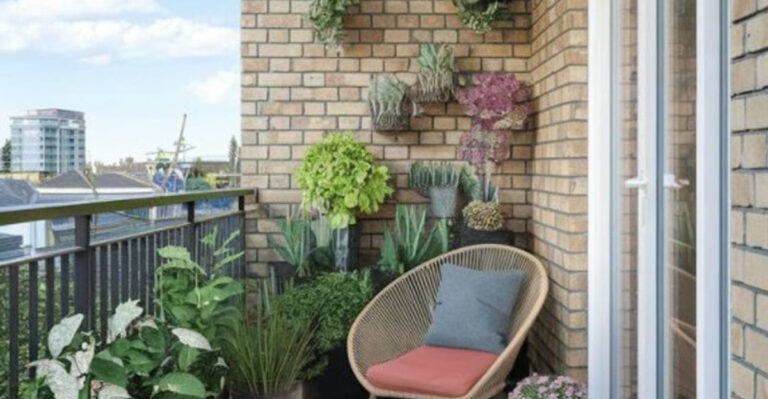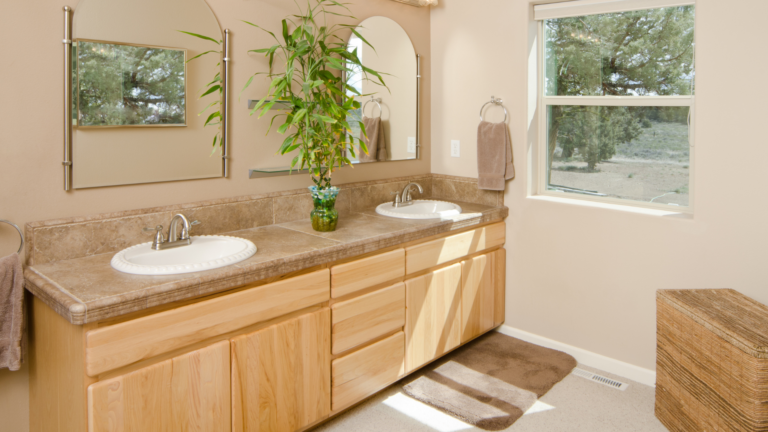16 Things You Should Never Do If You Have Granite Countertops
Granite countertops are stunning and tough, which is exactly why I loved choosing them for my kitchen. But here’s the thing, just because they’re durable doesn’t mean they’re indestructible.
I was surprised to learn that some of my everyday habits were actually doing more harm than good. If you’ve got granite, chances are you might be making a few of the same mistakes without even realizing it.
These countertops need a little extra love to stay looking their best. Here’s a look at some of the most common ways we unknowingly damage granite and how to avoid them.
1. Cut Food Directly On The Surface
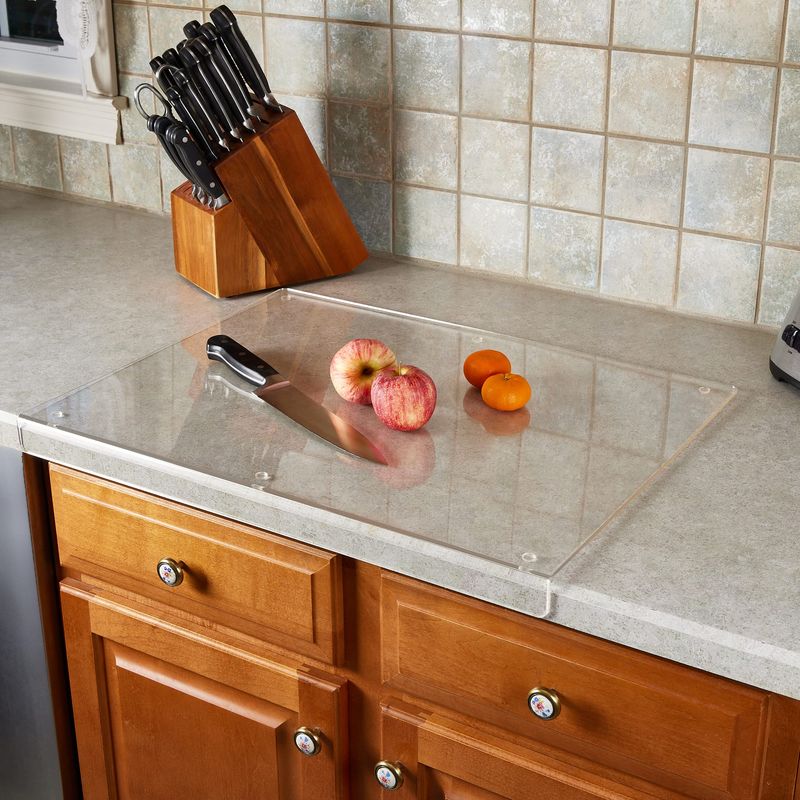
Using your granite as a cutting board might seem convenient, but your knives will hate you for it! The stone is harder than your blade, causing your knives to dull quickly.
Granite can actually withstand knife action without immediate damage, but over time, tiny scratches accumulate and dull the surface’s polished finish.
Instead, always use a cutting board to protect both your knives and countertop investment.
2. Skip The Sealing Process
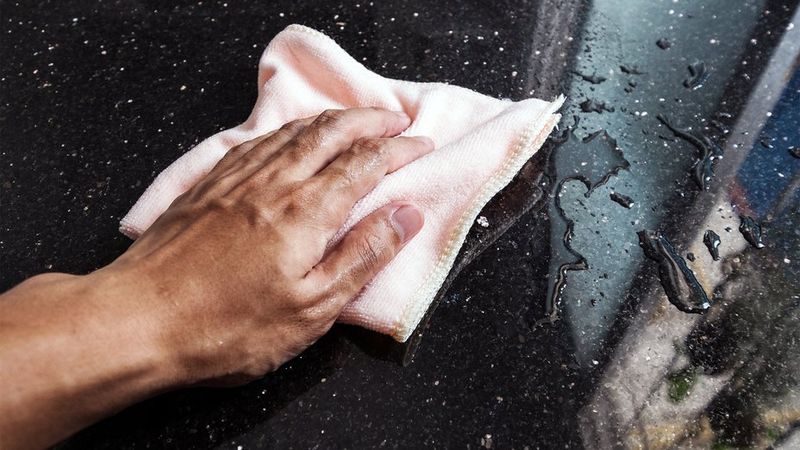
Forgetting to seal your granite is like leaving your car unlocked in a sketchy neighborhood – you’re asking for trouble! Granite contains microscopic pores that can absorb liquids when left unsealed.
Without proper sealing, wine, juice, and oils seep into these tiny openings, creating stains that become permanent fixtures.
Most experts recommend sealing granite countertops every 1-3 years, depending on the stone’s porosity and the sealer’s quality.
3. Place Hot Pans Directly On Granite
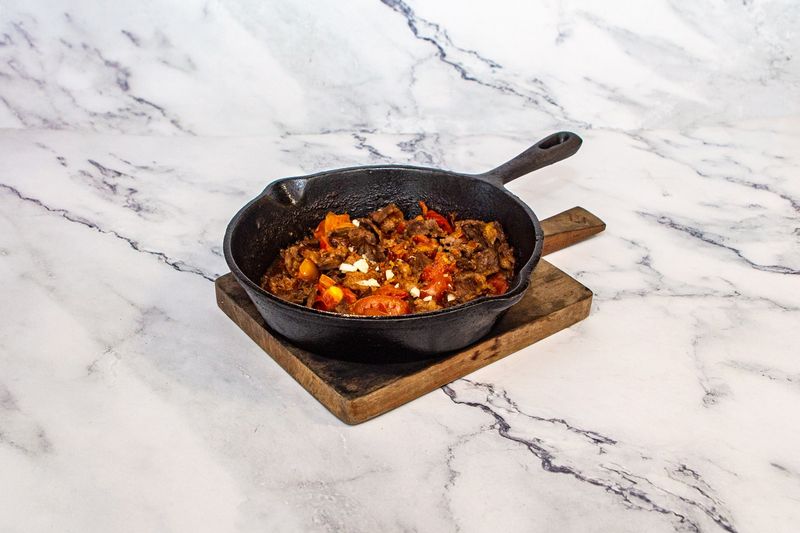
Though granite can handle heat better than many countertop materials, it isn’t completely heatproof.
Extremely hot pots and pans might not crack your countertop immediately, but they can damage the sealer. When the protective seal gets compromised, your granite becomes vulnerable to stains and damage.
Play it safe by using trivets or hot pads under cookware fresh from the stove or oven. Your future self will thank you for this simple habit!
4. Clean With Vinegar Or Citrus Cleaners
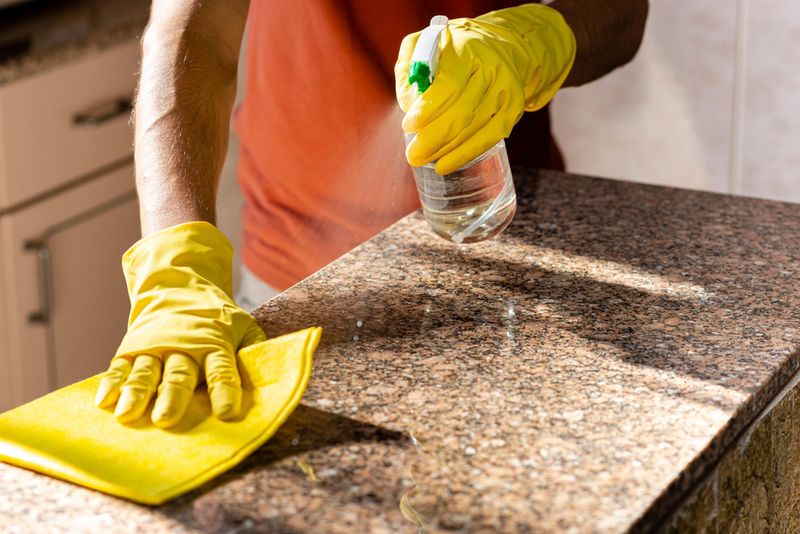
Vinegar might be your go-to natural cleaner, but it’s your granite’s worst nightmare! Acidic substances like vinegar, lemon juice, and citrus cleaners slowly eat away at the stone’s surface and deteriorate the protective sealer.
Over time, these cleaning agents create dull spots and etch marks that can’t be buffed out. Stick with pH-neutral granite cleaners or simple soap and water.
Sometimes the gentlest solution is actually the most effective for long-term care.
5. Leave Spills Unattended
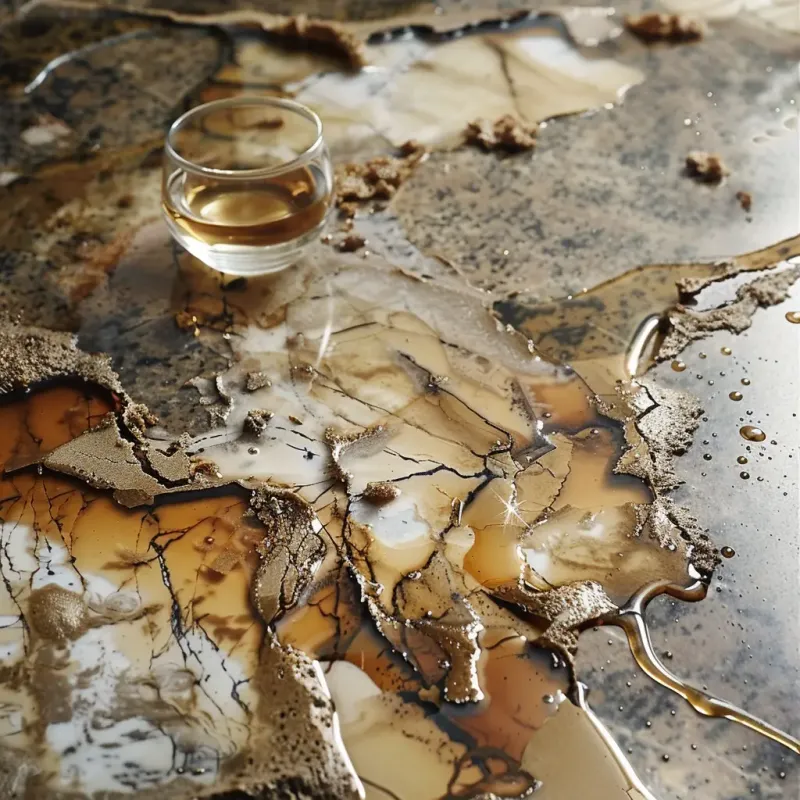
Spilled your morning coffee? Don’t shrug it off until later! Even sealed granite can absorb liquids if they sit long enough, especially acidic substances like wine, juice, or coffee.
The longer a spill remains, the higher the chance it will penetrate the sealer and leave a permanent stain.
Quick action is your best defense – simply blot (don’t wipe) spills immediately with a paper towel, then clean the area with mild soap and water.
6. Store Toiletries Directly On Bathroom Granite
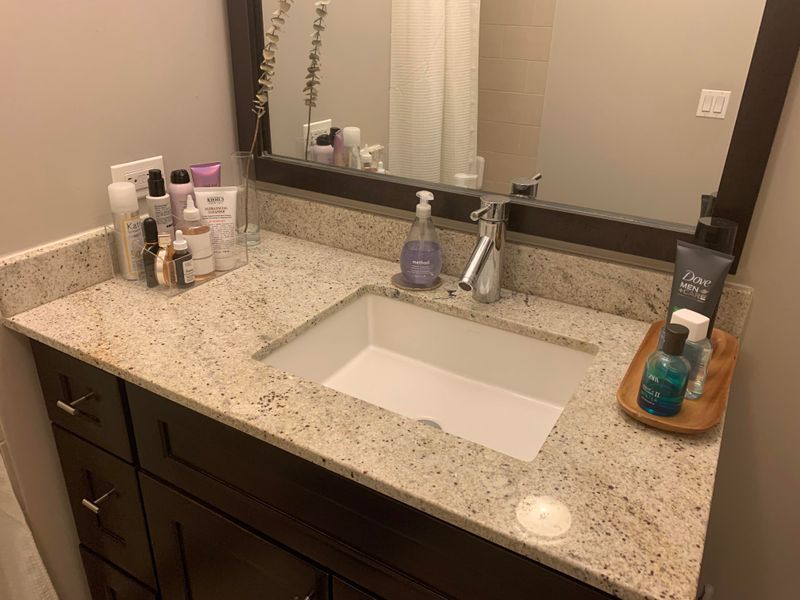
Those fancy bathroom products might be secretly sabotaging your counters! Toiletries containing oils, perfumes, and acids can leave rings and damage the sealer when bottles sit directly on granite surfaces.
Makeup, hair products, and even hand soap often contain ingredients that gradually break down granite’s protective layer.
Use decorative trays or stands to elevate your bathroom essentials instead. This simple barrier protects your investment while keeping everything organized!
7. Use Abrasive Scrubbing Pads
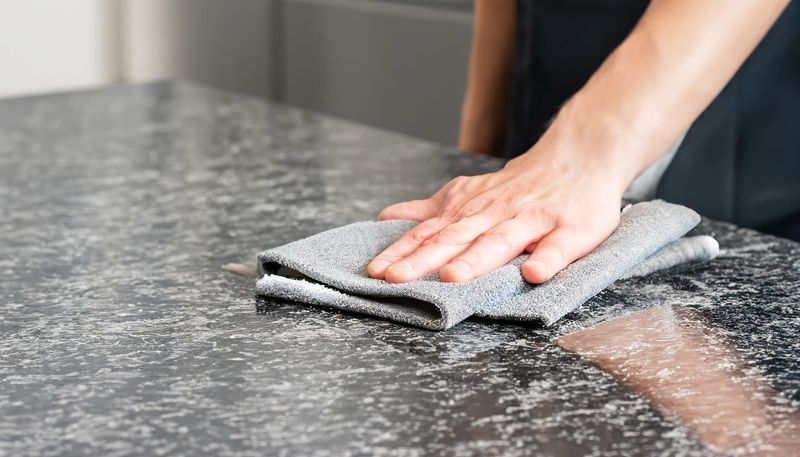
Attacking stubborn spots with steel wool or abrasive pads feels satisfying but destroys granite’s finish! Scratchy cleaning tools create micro-scratches that dull the surface and potentially damage the sealer.
Once the polished finish is scratched, it’s extremely difficult to restore without professional help. Soft cloths or microfiber towels provide all the cleaning power you need for routine maintenance.
For stubborn spots, a plastic scraper works wonders without risking damage.
8. Sit Or Stand On Your Countertops
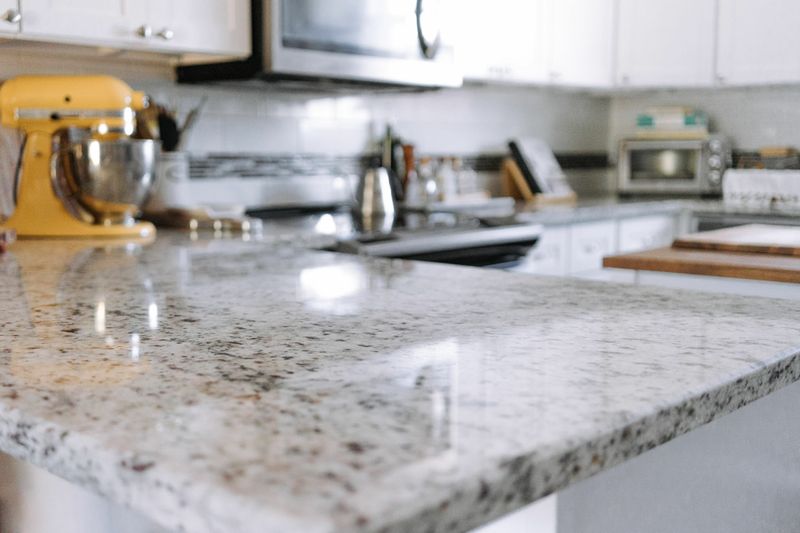
Hopping up on the counter might seem harmless, but granite isn’t designed to support concentrated weight! Though incredibly strong against everyday use, granite can crack when excessive pressure focuses on one area.
This is especially true near edges, seams, or areas with less support underneath. Children climbing to reach cabinets or adults sitting on counters create unnecessary risk.
The repair costs for a cracked slab will definitely make you think twice about using it as a seat!
9. Drag Heavy Appliances Across The Surface

Moving that coffee maker without lifting it is a recipe for disaster! Sliding heavy objects across granite can scratch the surface or chip the edges, especially if the item has rough or metal bottoms.
Appliances like blenders, stand mixers, and even ceramic canisters should always be lifted rather than dragged.
If you frequently move certain items, consider placing felt pads on their bottoms. Small preventative measures save you from the heartbreak of permanent damage!
10. Use Generic All-Purpose Cleaners
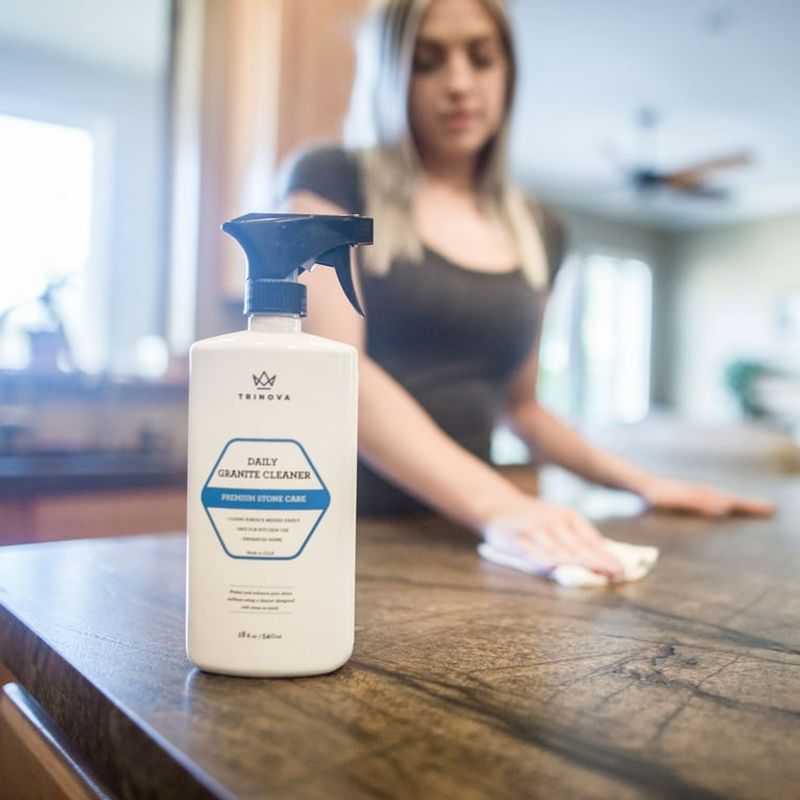
Grab-and-go cleaning sprays might seem convenient but often contain harmful chemicals that damage granite over time.
Many commercial cleaners contain ammonia, bleach, or acids that strip away the protective sealer. Without this invisible barrier, your granite becomes vulnerable to staining and etching.
Invest in cleaners specifically formulated for natural stone or make your own by mixing a few drops of mild dish soap with warm water. Simple solutions often provide the best protection!
11. Place Wet Glasses Directly On Granite
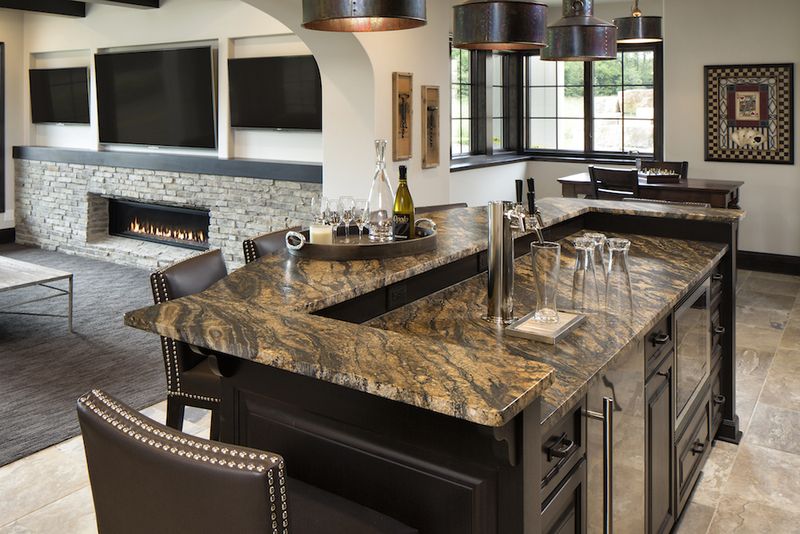
Those innocent water rings from your iced tea glass can actually harm your counters! When cold drinks create condensation, the water that pools underneath can penetrate the sealer if left too long.
Water rings might seem temporary, but repeated exposure in the same spots can eventually weaken the sealer and leave permanent marks.
Using coasters isn’t just for fancy homes – it’s practical protection for your investment. Coasters are cheaper than new countertops!
12. Neglect Regular Cleaning
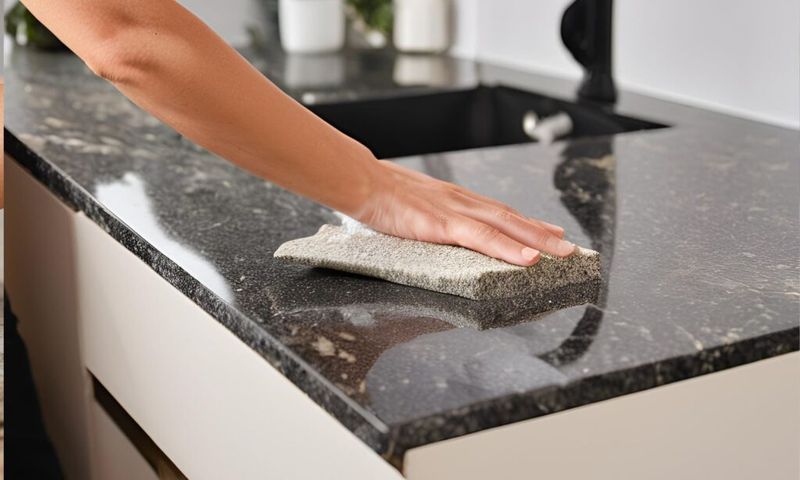
Skipping daily wipe-downs allows tiny food particles and oils to settle into granite’s microscopic pores. Even invisible residue can build up over time, making your counters look dull and feel slightly sticky.
Regular cleaning prevents this film from forming and maintains your granite’s natural beauty. A simple daily routine with warm water and mild soap keeps surfaces gleaming. Think of it as a one-minute investment that preserves thousands of dollars worth of countertop!
13. Use Your Granite As A Hammer Surface
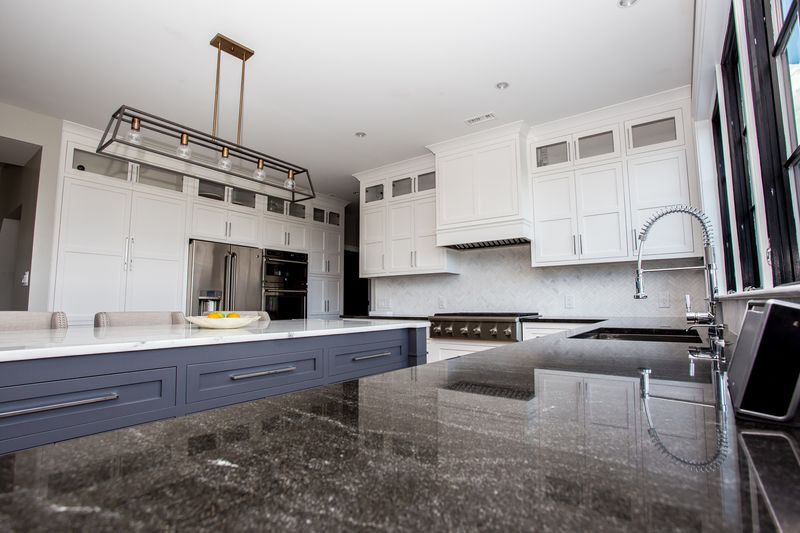
Cracking walnuts or tenderizing meat directly on granite might seem harmless since the stone is so hard. However, impact forces concentrated in small areas can chip or crack even the sturdiest granite.
The stone’s crystalline structure, while durable, has natural breaking points. Repeated impacts eventually find these weak spots.
Always use appropriate tools and cutting boards for kitchen tasks requiring force. Your countertops are meant to be surfaces, not tools!
14. Place Raw Meat Directly On The Surface

Raw chicken on your beautiful granite? Yikes! Though granite isn’t as porous as some materials, bacteria from raw meat can seep into microscopic crevices, creating potential health hazards.
Even with regular cleaning, these tiny spaces might harbor harmful microorganisms. Always use cutting boards for food preparation, especially with raw proteins.
This practice protects both your countertops and your family’s health, making it a no-brainer safety measure.
15. Ignore Chips And Cracks
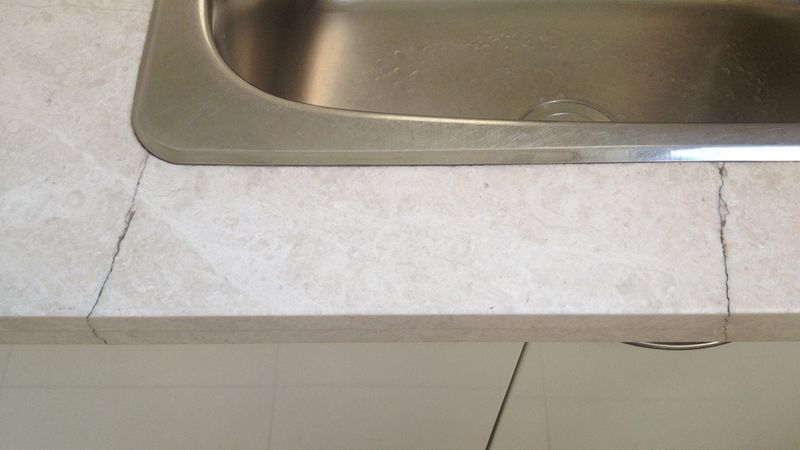
Small damages have a sneaky way of becoming big problems when ignored! Even tiny chips create entry points for moisture and staining agents to penetrate beneath the surface.
What starts as a minor imperfection can spread into a larger crack, especially near sinks where water exposure is constant.
Professional repair services can fix small damages before they worsen. Quick action preserves both your countertop’s appearance and structural integrity before the problem grows!
16. Mix Different Cleaners Together
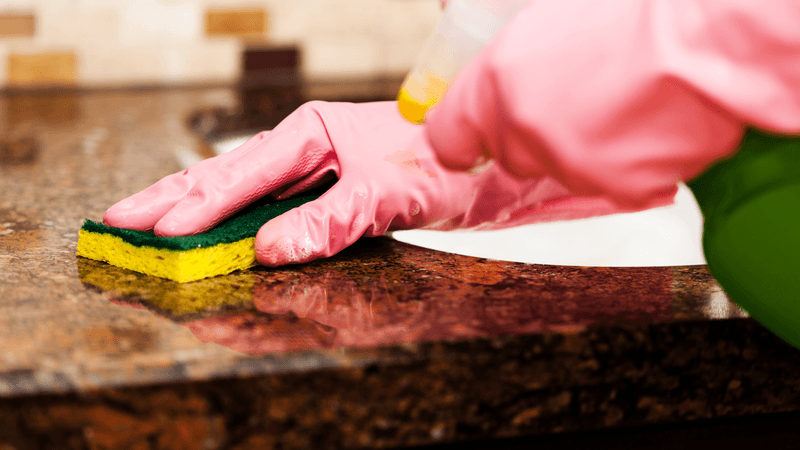
Creating your own cleaning cocktails by mixing products can damage granite and pose health risks! Chemical combinations often react in unpredictable ways, potentially creating substances that eat through sealers or release harmful fumes.
The classic example is mixing bleach with ammonia, which creates toxic chloramine gas. Stick with single, granite-safe cleaning products and follow manufacturer instructions.
Sometimes the simplest approach is also the safest for both your countertops and your lungs!



